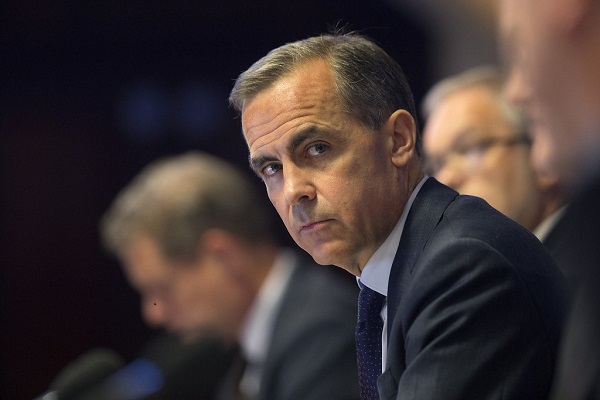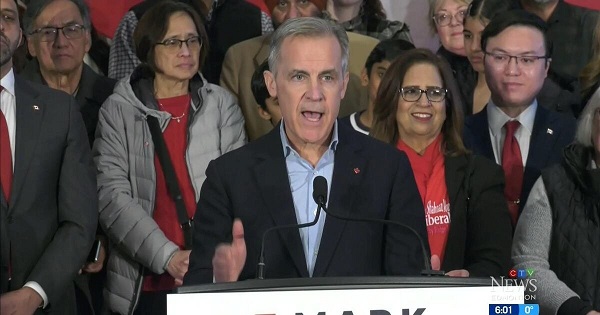Business
Trump’s ‘Liberation Day’ – Good News for Canadian Energy and Great News for WCSB Natural Gas
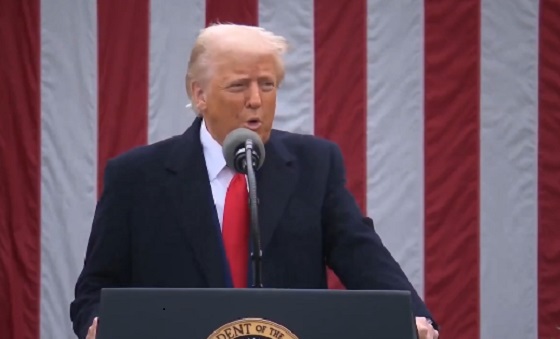
By Maureen McCall
April 2 was ‘Liberation Day’ according to U.S. President Donald Trump. While the announcement of U.S. reciprocal tariffs was not good news for many countries, Trump’s announcement also had some good news for Canadian Energy companies – 0% tariffs. Some tariffs against Canada are still in place, but for now, no energy sector tariffs against Canada underscores the importance of Canadian energy to the Trump administration.
President Trump announced new tariffs on April 2nd, which he dubbed “Liberation Day” with a 10% baseline tariff for all U.S. trading partners, to go into effect on April 5th. He also announced more reciprocal tariffs against the “worst offenders,” which will go into effect on April 9th but no tariffs on Canadian energy were announced.

Trump’s Reciprocal Tariffs Announcement
Alberta Premier Danielle Smith celebrated the win which she says is precisely what she has been advocating for from the U.S. Administration for months.
“The United States has decided to uphold the majority of the free trade agreement (CUSMA) between our two nations. It also appears this will continue to be the case until after the Canadian Federal election has concluded and the newly elected Canadian government is able to renegotiate CUSMA with the U.S. Administration. It means that the majority of goods sold into the United States from Canada will have no tariffs applied to them, including 0% tariffs on energy, minerals, agricultural products, uranium, seafood, potash and a host of other Canadian goods.”
This is great news for Canadian energy producers, especially natural gas producers who are experiencing dramatic growth in the Montney.
At this year’s S&P Global CERAWeek, Mike Verney, Executive Vice-President of petroleum reserves with McDaniel & Associates Consultants Ltd. had great news for Canadian companies.
McDaniel’s study, commissioned by the Alberta Energy Regulator (AER), reported data indicating that Alberta has proven natural gas reserves of 130 trillion cubic feet (TCF), compared to previous provincial estimates of only 24 TCF. According to the study, if probable gas reserves are added in, the overall figure is 144 TCF.
As reported in the Financial Post, Verney said “We’re growing like mad in the Montney. The major natural gas plays in the U.S. are actually declining versus the Montney that is actually growing.”
This message was echoed by Michael Rose, the Chairman, President and Chief Executive Officer of Tourmaline Oil, Canada’s largest natural gas producer during his keynote address at the SPE Canadian Energy Technology Conference and Exhibition last month in Calgary.
Not a Sunset Industry

Michael Rose – Chairman, President and Chief Executive Officer of Tourmaline Oil
Rose opened his keynote speech with optimism saying: “This is not a sunset industry- it is closer to sunrise than sunset” and spoke about Canada’s compelling opportunity for natural gas production as well as Tourmaline’s successes.
Reuters reports that analysts are wondering about the U.S.’s ability to meet the demand growth of booming liquefied natural gas (LNG) projects and also to meet huge domestic demand for natural gas-fired electricity generation to supply new data centre growth. Canada’s resources in Alberta’s Deep Basin and the North East BC Montney will be a huge supply source.
Deep Basin and the Montney are where the most competitive gas plays are found, and where Tourmaline operates as well as producing oil in the Peace River Triassic Lake.
Rose credits technology development and the building and ownership of midstream infrastructures as keys to affordability and profitability for Canadian companies which can control costs by controlling more of the production cycle. In addition, AI optimization has helped the company increase production. He also pointed out the environmental advantage of natural gas production. Since society needs the energy density of hydrocarbons to power industries, natural gas is the best choice as it is “the cleanest member of the fossil fuel stack.” He quoted Arjun Murti– 30 year Wall Street research analyst, buy-side investor, and advisor covering the global energy sector now with Veriten.com who asserts that there is no real energy transition and the only thing humans have actually transitioned off in the energy world is whale oil.
Rose said that 2022 statistics indicated the world set a record for all sources of energy. He pointed out that coal was supposed to replace wood 200 years ago, and it still hasn’t while wood, which has been renamed as biomass is still 7% of the overall energy stack.
The Golden Age of Gas
Rose’s natural gas outlook to 2028 in Canada was rosy saying gas “never looked better.” Beyond 2028 also looks good with a proliferation of electricity generation planned to feed data centre growth. In Alberta alone, 15 projects are in queue which will create a material increase in demand. In the U.S. however, some large U.S. natural gas supply basins have reached a tipping point with only 50% estimated ultimate recovery (EUR) left. Rose reported that drilling inventory is an issue in the U.S. but not in Canada. For example, Tourmaline has over 20 years of Tier 1 drilling inventory left while its U.S. peers don’t have the same luxury. He noted that U.S. M&A is currently driven by a quest for inventory. He noted that U.S. companies will chase profitable acquisitions in a quest for inventory to lower future costs saying “Things are still cheap in Canada.”
Canadian Resources – Will we ever be an energy superpower?
With global exploration down sharply, focus has turned to the WCSB where in the case of the Montney, only 5% has been produced so far.
“All you hear about is the western Canadian sedimentary basin and it is a monster, and it is the gift that keeps on giving, but we’re actually blessed with multiple other opportunities. Like the U.S., a number of them are off limits for government policy reasons, but certainly changes are in order.”
Some of the undeveloped basins in Canada which Rose referred to as “forbidden basins” are located on the West Coast and in the lowlands in Quebec. The tariff issue may be changing attitudes towards oil and gas development in those areas. Dealing with an unsupportive Federal Government for the last decade has made capital attraction difficult. Routine talk about phasing out Oil and Gas and the series of regulations, bills and initiatives that have stalled basin development and new pipelines have taken its toll. It has discouraged capital from flowing into the sector – a period that Rose said “ felt like an endless hurricane.”
So what is the right path forward?
The challenge for industry and policymakers is finding the right balance between energy and the environment according to Rose. He advises that setting unrealistic goals and timelines that are not based in science/technology or economics won’t work, and notes a shift away from the time frame set by net zero.
“We look at the whole environment, air, land and water, and we develop plans to improve performance in all three. We have a group of young engineers working on what amounts to an embedded clean tech business within our company, and I think they’re having a lot of fun doing it.”
One of Tourmaline’s longest initiatives, is the conversion of drilling rigs from diesel to natural gas, using field gas for fuel. The result is that projects have an improved economic return as well as reduced emissions. Rose says this year, Tourmaline will cross a “200 million barrier” and will have displaced 200 million litres of diesel and save $200 million including the makeup gas used. He says they like to think of it as a drill bit to burn initiative.
Mike Rose still had an optimistic view of the path forward for energy companies that is certainly more relevant after yesterday’s “Liberation Day” announcement from Trump.
“We’ve missed 10 years of opportunities,” Rose said. “It would have made us so much stronger than we are today as an industry and a country. Still, late is better than never. The only thing I’ll say about tariffs is that they are just another curve ball. We’ve had nothing but curve balls for 10 years, and we’ll figure out how to hit this one too. Given how integrated both countries’ energy systems are and will continue to be, I think a great narrative that just might appeal is: ‘Let’s make North America the world’s preeminent energy and oil and gas superpower’.”
Maureen McCall is an energy professional who writes on issues affecting the energy industry.
Automotive
Major automakers push congress to block California’s 2035 EV mandate
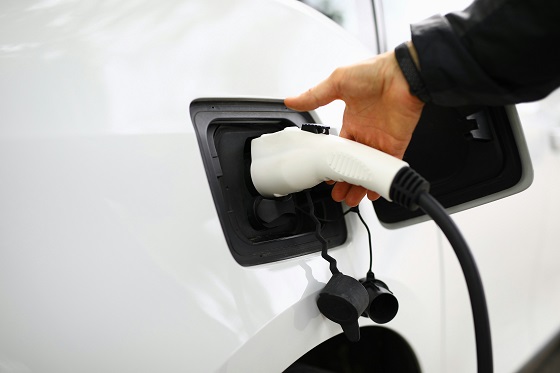
 MxM News
MxM News
Quick Hit:
Major automakers are urging Congress to intervene and halt California’s aggressive plan to eliminate gasoline-only vehicles by 2035. With the Biden-era EPA waiver empowering California and 11 other states to enforce the rule, automakers warn of immediate impacts on vehicle availability and consumer choice. The U.S. House is preparing for a critical vote to determine if California’s sweeping environmental mandates will stand.
Key Details:
-
Automakers argue California’s rules will raise prices and limit consumer choices, especially amid high tariffs on auto imports.
-
The House is set to vote this week on repealing the EPA waiver that greenlit California’s mandate.
-
California’s regulations would require 35% of 2026 model year vehicles to be zero-emission, a figure manufacturers say is unrealistic.
Diving Deeper:
The Alliance for Automotive Innovation, representing industry giants such as General Motors, Toyota, Volkswagen, and Hyundai, issued a letter Monday warning Congress about the looming consequences of California’s radical environmental regulations. The automakers stressed that unless Congress acts swiftly, vehicle shipments across the country could be disrupted within months, forcing car companies to artificially limit sales of traditional vehicles to meet electric vehicle quotas.
California’s Air Resources Board rules have already spread to 11 other states—including New York, Massachusetts, and Oregon—together representing roughly 40% of the entire U.S. auto market. Despite repeated concerns from manufacturers, California officials have doubled down, insisting that their measures are essential for meeting lofty greenhouse gas reduction targets and combating smog. However, even some states like Maryland have recognized the impracticality of California’s timeline, opting to delay compliance.
A major legal hurdle complicates the path forward. The Government Accountability Office ruled in March that the EPA waiver issued under former President Joe Biden cannot be revoked under the Congressional Review Act, which requires only a simple Senate majority. This creates uncertainty over whether Congress can truly roll back California’s authority without more complex legislative action.
The House is also gearing up to tackle other elements of California’s environmental regime, including blocking the state from imposing stricter pollution standards on commercial trucks and halting its low-nitrogen oxide emissions regulations for heavy-duty vehicles. These moves reflect growing concerns that California’s progressive regulatory overreach is threatening national commerce and consumer choice.
Under California’s current rules, the state demands that 35% of light-duty vehicles for the 2026 model year be zero-emission, scaling up rapidly to 68% by 2030. Industry experts widely agree that these targets are disconnected from reality, given the current slow pace of electric vehicle adoption among the broader American public, particularly in rural and lower-income areas.
California first unveiled its plan in 2020, aiming to make at least 80% of new cars electric and the remainder plug-in hybrids by 2035. Now, under President Donald Trump’s leadership, the U.S. Transportation Department is working to undo the aggressive fuel economy regulations imposed during former President Joe Biden’s term, offering a much-needed course correction for an auto industry burdened by regulatory overreach.
As Congress debates, the larger question remains: Will America allow one state’s left-wing environmental ideology to dictate terms for the entire country’s auto industry?
Business
Net Zero by 2050: There is no realistic path to affordable and reliable electricity
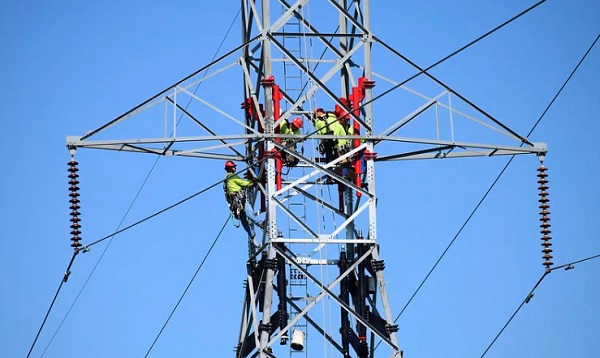
 By Dave Morton of the Canadian Energy Reliability Council.
By Dave Morton of the Canadian Energy Reliability Council.
Maintaining energy diversity is crucial to a truly sustainable future
Canada is on an ambitious path to “decarbonize” its economy by 2050 to deliver on its political commitment to achieve net-zero greenhouse gas (GHG) emissions. Although policy varies across provinces and federally, a default policy of electrification has emerged, and the electricity industry, which in Canada is largely owned by our provincial governments, appears to be on board.
In a November 2023 submission to the federal government, Electricity Canada, an association of major electric generators and suppliers in Canada, stated: “Every credible path to Net Zero by 2050 relies on electrification of other sectors.” In a single generation, then, will clean electricity become the dominant source of energy in Canada? If so, this puts all our energy eggs in one basket. Lost in the debate seem to be considerations of energy diversity and its role in energy system reliability.
What does an electrification strategy mean for Canada? Currently, for every 100 units of energy we consume in Canada, over 40 come to us as liquid fuels like gasoline and diesel, almost 40 as gaseous fuels like natural gas and propane, and a little less than 20 in the form of electrons produced by those fuels as well as by water, uranium, wind, solar and biomass. In British Columbia, for example, the gas system delivered approximately double the energy of the electricity system.
How much electricity will we need? According to a recent Fraser Institute report, a decarbonized electricity grid by 2050 requires a doubling of electricity. This means adding the equivalent of 134 new large hydro projects like BC’s Site C, 18 nuclear facilities like Ontario’s Bruce Power Plant, or installing almost 75,000 large wind turbines on over one million hectares of land, an area nearly 14.5 times the size of the municipality of Calgary.
Is it feasible to achieve a fully decarbonized electricity grid in the next 25 years that will supply much of our energy requirements? There is a real risk of skilled labour and supply chain shortages that may be impossible to overcome, especially as many other countries are also racing towards net-zero by 2050. Even now, shortages of transformers and copper wire are impacting capital projects. The Fraser Institute report looks at the construction challenges and concludes that doing so “is likely impossible within the 2050 timeframe”.
How we get there matters a lot to our energy reliability along the way. As we put more eggs in the basket, our reliability risk increases. Pursuing electrification while not continuing to invest in our existing fossil fuel-based infrastructure risks leaving our homes and industries short of basic energy needs if we miss our electrification targets.
The IEA 2023 Roadmap to Net Zero estimates that technologies not yet available on the market will be needed to deliver 35 percent of emissions reductions needed for net zero in 2050. It comes then as no surprise that many of the technologies needed to grow a green electric grid are not fully mature. While wind and solar, increasingly the new generation source of choice in many jurisdictions, serve as a relatively inexpensive source of electricity and play a key role in meeting expanded demand for electricity, they introduce significant challenges to grid stability and reliability that remain largely unresolved. As most people know, they only produce electricity when the wind blows and the sun shines, thereby requiring a firm back-up source of electricity generation.
Given the unpopularity of fossil fuel generation, the difficulty of building hydro and the reluctance to adopt nuclear in much of Canada, there is little in the way of firm electricity available to provide that backup. Large “utility scale” batteries may help mitigate intermittent electricity production in the short term, but these facilities too are immature. Furthermore, wind, solar and batteries, because of the way they connect to the grid don’t contribute to grid reliability in the same way the previous generation of electric generation does.
Other zero-emitting electricity generation technologies are in various stages of development – for example, Carbon Capture Utilization and Storage (CCUS) fitted to GHG emitting generation facilities can allow gas or even coal to generate firm electricity and along with Small Modular Reactors (SMRs) can provide a firm and flexible source of electricity.
What if everything can’t be electrified? In June 2024, a report commissioned by the federal government concluded that the share of overall energy supplied by electricity will need to roughly triple by 2050, increasing from the current 17 percent to between 40 and 70 percent. In this analysis, then, even a tripling of existing electricity generation, will at best only meet 70 percent of our energy needs by 2050.
Therefore, to ensure the continued supply of reliable energy, non-electrification pathways to net zero are also required. CCUS and SMR technologies currently being developed for producing electricity could potentially be used to provide thermal energy for industrial processes and even building heat; biofuels to replace gasoline, diesel and natural gas; and hydrogen to augment natural gas, along with GHG offsets and various emission trading schemes are similarly
While many of these technologies can and currently do contribute to GHG emission reductions, uncertainties remain relating to their scalability, cost and public acceptance. These uncertainties in all sectors of our energy system leaves us with the question: Is there any credible pathway to reliable net-zero energy by 2050?
Electricity Canada states: “Ensuring reliability, affordability, and sustainability is a balancing act … the energy transition is in large part policy-driven; thus, current policy preferences are uniquely impactful on the way utilities can manage the energy trilemma. The energy trilemma is often referred to colloquially as a three-legged stool, with GHG reductions only one of those legs. But the other two, reliability and affordability, are key to the success of the transition.
Policymakers should urgently consider whether any pathway exists to deliver reliable net-zero energy by 2050. If not, letting the pace of the transition be dictated by only one of those legs guarantees, at best, a wobbly stool. Matching the pace of GHG reductions with achievable measures to maintain energy diversity and reliability at prices that are affordable will be critical to setting us on a truly sustainable pathway to net zero, even if it isn’t achieved by 2050.
Dave Morton, former Chair and CEO of the British Columbia Utilities Commission (BCUC), is with the Canadian Energy Reliability Council.
-
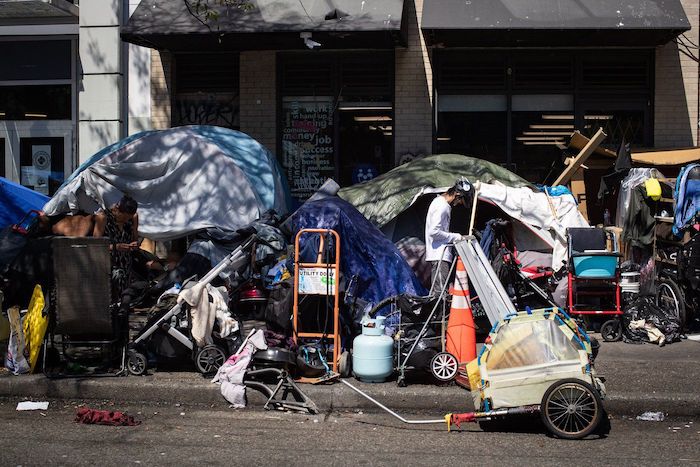
 2025 Federal Election2 days ago
2025 Federal Election2 days agoPolice Associations Endorse Conservatives. Poilievre Will Shut Down Tent Cities
-
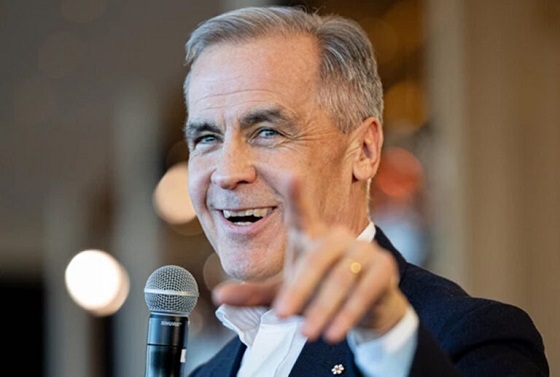
 2025 Federal Election2 days ago
2025 Federal Election2 days agoCarney’s Hidden Climate Finance Agenda
-

 2025 Federal Election2 days ago
2025 Federal Election2 days agoPolls say Canadians will give Trump what he wants, a Carney victory.
-

 2025 Federal Election2 days ago
2025 Federal Election2 days agoColumnist warns Carney Liberals will consider a home equity tax on primary residences
-
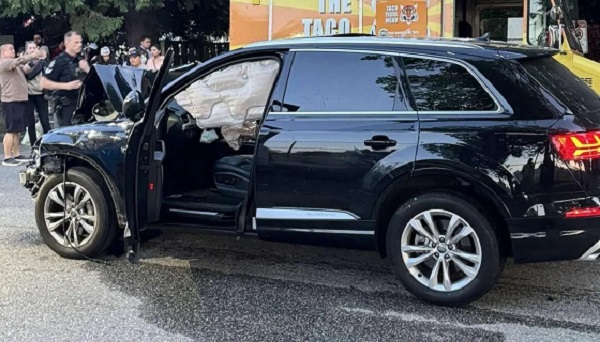
 2025 Federal Election2 days ago
2025 Federal Election2 days agoNine Dead After SUV Plows Into Vancouver Festival Crowd, Raising Election-Eve Concerns Over Public Safety
-

 International2 days ago
International2 days agoJeffrey Epstein accuser Virginia Giuffre reportedly dies by suicide
-
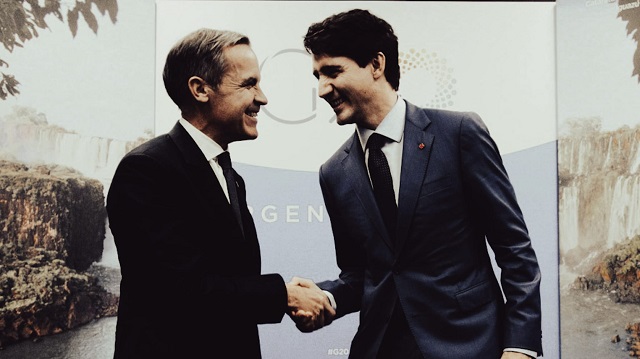
 2025 Federal Election1 day ago
2025 Federal Election1 day agoCanada is squandering the greatest oil opportunity on Earth
-

 2025 Federal Election2 days ago
2025 Federal Election2 days agoMark Carney: Our Number-One Alberta Separatist

